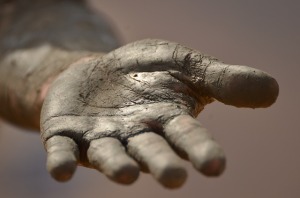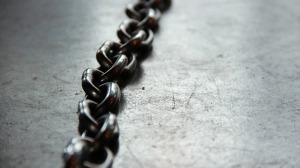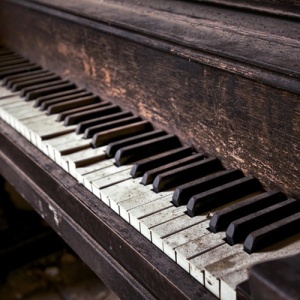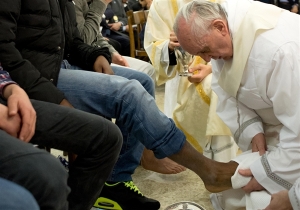Old routines die hard.
As I cautiously made my way toward the prison chapel with the other, mostly seasoned volunteers, I found myself instinctively edging toward the right side of the yellow painted line running down the concrete walkways between buildings. Even though I was at the Polunksy Unit as a volunteer, I had this nagging feeling that at any moment I might be asked to surrender my ID so that one of the officers in gray could write me up for being “out of place.”
It was my first time to step foot inside a Texas correctional facility since my release from a similar unit more than nine years ago. Though I had visited a prison in Iowa last year, it felt different being inside the perimeter fence of this particular unit. As I began catching glimpses of men in white uniforms, visiting with their families at small tables outside the visitors reception area, mopping the floors, waiting in line for pill call, preparing for midday chow, I suddenly felt a queasy sense of familiarity–like I was stuck in the middle of a bad dream. Even after all these years, it felt like I had only just left this environment. Some of the faces I saw even reminded me of people I had done time with myself–people who had far longer sentences than I did and who, for all I knew, might very well have been assigned to this unit after I left the system.
I was halfway to the chapel before I realized that I was deliberately avoiding eye contact with the prisoners. It’s one of those rules the older guys teach you when you’re a first-timer landing at a new unit: Walk tall. Look tough. But don’t make eye contact unless you’re ready for a fight. Without really thinking about it, I had fallen back into the habit.
But once I let myself return their gazes, I saw something different in their eyes. They weren’t looking at me like a fresh piece of meat because, in their world, I represented something exotic–an outsider from the free world who had decided to spend his Saturday with them in a hot concrete gymnasium. They didn’t know where I came from or why I had come. But to them, I wasn’t just another nameless face in a sea of hundreds of white-garbed offenders doing time for God only knows what. I wasn’t a competitor or a threat. I wasn’t anybody’s homeboy, and no one needed to size me up to determine whether they could count on me in a fight. I was just there to visit, and to remind them that some people beyond the razor wire fences really do still care about them.
Some of the guys seemed to sense that I was nervous, and so they kept their distance out of respect. But most of them just came right up to me and shook my hand–black, white, Hispanic alike. Most of them just offered one or two words of greeting, but the smiles on their faces communicated far more. “You don’t know me, and I don’t know you,” they seemed to say. “But who cares? I’m just glad you’re here.”
All at once, I knew I had come home. Not to my place of permanent residence, of course, but to the kind of place where I could truly sense the presence of Jesus Christ. Though my wife and children were many miles away, I sensed that I was still among family here, and it had been too long since I had paid a visit.
I was there with others from the Austin area as part of a group that comes every 5 or 6 weeks to assist with weekend chapel services at Victorious Living Church. This inmate-led ministry exists inside the Polunsky Unit by the grace of the unit’s warden, who acknowledges that its effect on the prison culture helps to keep in check much of the violence that once made  Polunsky one of the most notoriously bad institutions in the state. It’s sustained by generous donations and frequent guest visits from churches across the state, but the real engine of ministry is the unmistakable movement of the Holy Spirit among the dozens of prisoners who form the chapel ministry team. Despite their uniforms, these are godly men who are sold out for Jesus, and they spend generously of their own limited resources to bless and encourage their brethren in white.
Polunsky one of the most notoriously bad institutions in the state. It’s sustained by generous donations and frequent guest visits from churches across the state, but the real engine of ministry is the unmistakable movement of the Holy Spirit among the dozens of prisoners who form the chapel ministry team. Despite their uniforms, these are godly men who are sold out for Jesus, and they spend generously of their own limited resources to bless and encourage their brethren in white.
Like others who had come that day to visit, I was there primarily as a spectator. For two hours before the service, I spent time just chatting with members of the worship band and choir. Though there was a conspicuous absence of officers supervising the proceedings within the chapel, I felt as comfortable and safe talking to these men as I do with members of my own church. And when the general population prisoners began filing in for service, we had church like I’ve never experienced it before–before, during, or since my incarceration.
At the end of the service, when the volunteer pastor opened the floor for an altar call, I had the privilege of praying with and for some of the men in attendance who had private needs. But it wasn’t just the volunteers who were doing the praying. I watched many of these men pass us up in order to pray with members of the inmate ministry team.
Somehow, that felt right. It felt like I was a guest in someone else’s church–not some ramshackle chapel service at a correctional institution, but a bona fide congregation of true believers in a community with its own elders and pastors. As the service wound down and we prepared to leave, I couldn’t help reflecting on how the men had probably blessed me that day far more than I had blessed any of them.
And this is where so many of us in the church get it wrong when it comes to prison ministry. So often we think of this work in terms of bringing Jesus to the prisoners. But I’m increasingly convinced that we have it backwards.
Prison ministry isn’t about taking Jesus into the prisons. It’s about being the hands and feet of the Jesus who’s already there–with or without us.



 hings that DuVernay’s documentary got me thinking about is whether there’s something inherently cruel and unusual about imposing slavery as punishment for a crime. Did the 13th Amendment get it wrong? Did we authorize a form of punishment that we never should have?
hings that DuVernay’s documentary got me thinking about is whether there’s something inherently cruel and unusual about imposing slavery as punishment for a crime. Did the 13th Amendment get it wrong? Did we authorize a form of punishment that we never should have? Dr. Cohen’s fascinating research on the group appears
Dr. Cohen’s fascinating research on the group appears  ho had done plenty of session work with popular musicians but who lacked my classical training. I found myself begging for lessons from the guitarist who could improvise riffs in about a dozen different complex chord progressions on the spot. I envied my black chorister peers who seemed to just “get” the harmonies of the songs without having to be handed an octavo with their parts defined by the composer. In so many ways, I came to realize, these men were my superiors, despite their lack of formal training. Yet they welcomed and admired my ability to score the music they could only intuitively play. They sought my input in crafting new harmonies for the choir and respected my knowledge of proper vocal technique.
ho had done plenty of session work with popular musicians but who lacked my classical training. I found myself begging for lessons from the guitarist who could improvise riffs in about a dozen different complex chord progressions on the spot. I envied my black chorister peers who seemed to just “get” the harmonies of the songs without having to be handed an octavo with their parts defined by the composer. In so many ways, I came to realize, these men were my superiors, despite their lack of formal training. Yet they welcomed and admired my ability to score the music they could only intuitively play. They sought my input in crafting new harmonies for the choir and respected my knowledge of proper vocal technique.
